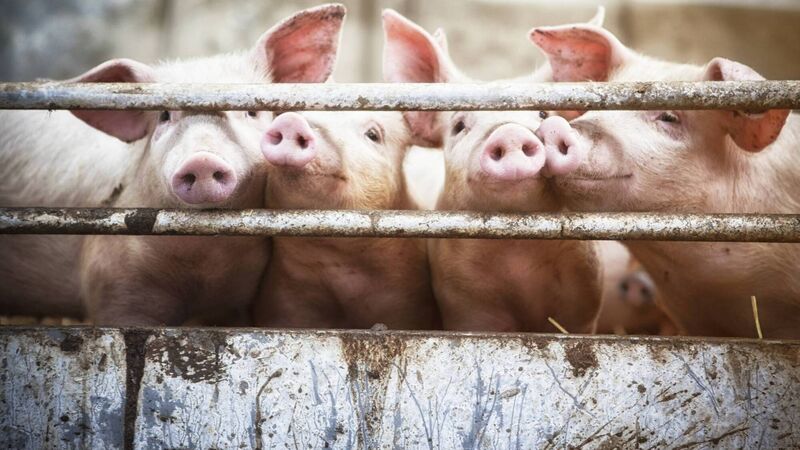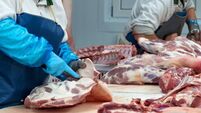Top 25% of pig farms produce 29.3 pigs per sow per year

Overall, the quantity of pig meat produced per sow per year in Ireland has increased by 9.6% since 2019, due to a combination of increased number of pigs produced per sow per year, and increased carcase weights.
Pigs born alive per litter surpassed 15 for the first time in 2024, according to the annual analysis of Teagasc Profit Monitor pig farms.
The data comes from 85 herds with more than 73,000 sows, or 55% of the total Irish sow herd. They range from less than 100 sows to more than 2,500 per herd, the average herd size is 868 sows.
However, the average results mask significant differences between the top-performing herds and the rest. “In the top 25% of herds, the number of pigs produced per sow was 29.3 pigs per sow per year," said specialist pig adviser Ger McCutcheon, in a recent episode of the Pig Edge podcast.
"That’s one and a half pigs above the average of 27.8 pigs per sow per year. And interestingly, the born alive on those farms is 15.77 born alive per litter, versus the 15.33 average, so that’s giving them a huge edge in terms of increasing their number of pigs per sow. Also, on those top 25% of farms, the mortality levels were lower at all stages of production.
“There has been an overall improvement in both growth rate and feed conversion from weaning to sale, and that is impressive”.
The average dead weight in recorded herds increased from 89.3kg in 2023 to 91.7kg in 2024 per pig sold. There was an increase in growth rate from weaning to sale (757 to 787 g/day), and there was a decrease of 0.05 in the Feed Conversion Efficiency (FCE) from weaning to sale compared to 2023. The FCE in the top 25% of farms was 2.28, compared to 2.37 for the average farms.
“The top 25% sold their pigs slightly lighter, but they used 11.2kg less feed to produce the pigs, which gave them a net return on each pig sold in the region of €2.50,” Mr McCutcheon said.
Overall, the quantity of pig meat produced per sow per year in Ireland has increased by 9.6% since 2019, due to a combination of increased number of pigs produced per sow per year, and increased carcase weights.
Mr McCutcheon said: “2024 is the first time we have surpassed the 15 born alive per litter. Interestingly, 2019 was the first time we got beyond 14 pigs born alive per litter. If we go back to 2010, we were at 12 pigs born alive per litter.
“I would put a huge proportion of the increase down to genetic improvement that’s been seen throughout Europe,” he said.
The rise to 15.33 pigs born alive per litter, and a decrease in litters per sow per year (from 2.26 in 2023 to 2.2 in 2024), combined with a slight rise in mortality, caused the number of pigs produced per sow per year to decrease slightly, from 27.9 in 2023 to 27.8 in 2024.
Despite this, the output of pig meat per sow per year increased, from 2,491kg in 2023 to 2,549kg in 2024.
“The biggest cost of production is the feed cost. In 2023, that feed cost was still high, as a result of the Ukranian war. That figure in 2023 was 150.9c/kg for feed. In 2024, that dropped to 127.4c/kg,” Mr McCutcheon said.
“The second biggest cost in pig production would be the labour cost. In 2023, that figure was 14.9c. In 2024, it looks like that figure has risen to 16.1c”. This slight increase may reflect more farms now including the home labour costs for their farms.
“Healthcare is the third largest production cost. It dropped to 7.5c from 8.7c,” he said.
Heat, power and light, and transport costs, dropped by 2.5c in 2024 compared to the very high figure of 8.9c in 2023. The installation of renewable energy on some farms may have contributed to this decrease.
Teagasc maintains detailed records on pig production back to the 1990s. “The number of pigs produced per sow in 2000 was 21.6 per year. When you look at our figure of 27.8 in 2024, it’s a very, very impressive figure.
"Another interesting figure is that the sale weight of pigs has gone up quite dramatically. We’re up at 119.97kg now, whereas back in 2000, we were at 90.1kg liveweight. Genetics again, I would say, and the management side has greatly improved on farms,” Mr. McCutcheon said.
He recommended that every pig farm benchmark their own herd performance and production costs by participating in the Profit Monitor system.












